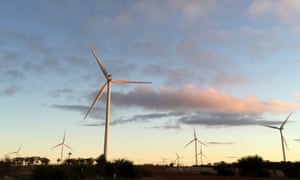Australia needs at least half of all new cars in 10 years time to be electric vehicles to remain within 2C warming, new analysis shows
Australia can achieve a transition to net zero emissions by 2050 with known technologies, but the deployment of low emissions options will need to be accelerated significantly, according to new analysis by ClimateWorks Australia.
The yet-to-be released analysis, which was previewed at a workshop at the Australian National University amid a resumption of the climate wars in federal politics, suggests transitioning to net zero will require Australia’s electricity market to be 100% renewables by 2035, as well as achieving deep energy efficiency and electrification in buildings, and an accelerated rollout of electric vehicles.
The analysis says to remain within 2C warming, Australia would need at least half of all new cars in 10 years time to be electric vehicles. On a trajectory of staying within 1.5C, it would be three in four cars. Current government projections point to one in five cars sold.
Staying within those pathways would also require renewables to make up more than 70% of energy generation by 2030, rather than a 50% share.
Anna Skarbek, the chief executive of ClimateWorks, which is a non-profit advisory body that works within the Monash Sustainable Development Institute, told an ANU forum reaching net zero in Australia was entirely possible. “We know the technology is available, it is about how to accelerate the uptake,” she said.The yet-to-be released analysis, which was previewed at a workshop at the Australian National University amid a resumption of the climate wars in federal politics, suggests transitioning to net zero will require Australia’s electricity market to be 100% renewables by 2035, as well as achieving deep energy efficiency and electrification in buildings, and an accelerated rollout of electric vehicles.
The analysis says to remain within 2C warming, Australia would need at least half of all new cars in 10 years time to be electric vehicles. On a trajectory of staying within 1.5C, it would be three in four cars. Current government projections point to one in five cars sold.
Staying within those pathways would also require renewables to make up more than 70% of energy generation by 2030, rather than a 50% share.
“Looking just at the domestic economy, not the export economy, the technology mix is available for Australia to achieve net zero emissions within the carbon budget the science requires for 2C and for 1.5C.”
Skarbek – who is a former investment banker and a founding director of the Clean Energy Finance Corporation – said achieving net zero would require dialling up progress on the known technologies and “vastly scaling up carbon sequestration through forestry to buy us time to also scale up the research and development for the residual emissions”.
“If we want to achieve 1.5C instead of 2C warming, which we know from the science, 2C is exponentially worse than 1.5C, to do that, we can’t afford any of these areas to be going slower than they could,” Skarbek said.
“It’s all in.”
The work updates research the organisation did five years ago on pathways to decarbonisation, and Skarbek said the outlook had improved because of rapid improvements in technology. The new analysis updates modelling for Australia and it develops three Paris agreement-aligned scenarios.
The imminent release of the new analysis comes as Labor’s decision to sign on to a net zero target for 2050 – the opposition’s first major climate policy decision post-election – has prompted the Morrison government to blast Labor for proposing a long-term target in advance of a roadmap to get there.
While the Coalition has been attacking Labor, the government has not ruled out adopting its own 2050 target, and Scott Morrison this week declined to criticise the New South Wales government for adopting a net zero position for 2050.
Morrison told parliament he was happy to work with NSW on its ambition to hit net zero emissions by 2050 because the premier, Gladys Berejiklian, “ha[d] a plan” – although the specific plan the prime minister referenced on Tuesday ends in 2030.
The government will shortly release its own technology roadmap, work that forms part of its deliberations on driving the transition to low emissions. Morrison has said repeatedly he will not commit to any target beyond 2030 without understanding the costs, and the impact on jobs.
More than 70 countries and 398 cities say they have adopted a net zero position. Every Australian state has also signed up to net zero emissions by 2050, and these commitments are expressed either as targets or aspirational goals. The Business Council of Australia, which represents Australia’s biggest companies, also argues Australia should legislate a target of net zero emissions by 2050.
Rio Tinto announced on Wednesday its globe-spanning operations will reach net zero emissions by 2050 and it will spend US$1bn over the next five years to reduce its carbon footprint.

No comments:
Post a Comment